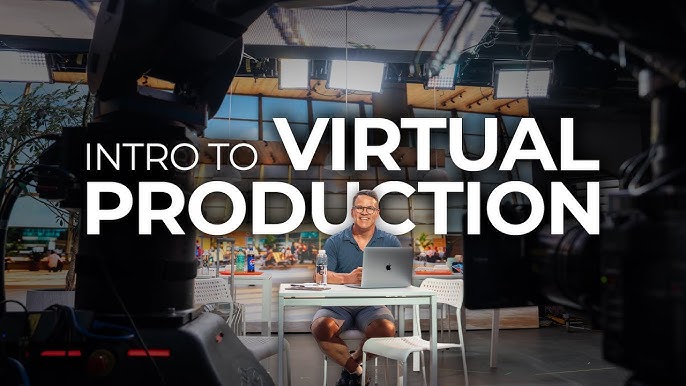Introduction
Technology is changing the way movies are made. Filmmakers don’t just build big sets or use green screens anymore. Now they use virtual studios with real-time computer graphics, giant LED screens, and game engines to create amazing worlds right on set. This new approach makes filming faster, costs less money, and lets people use their imagination like never before. From big blockbuster movies to small indie films, directors and crews are using these tools to make their work easier and more exciting. In this article, we’ll look at how virtual studios got started, what tools they use, the good and tricky parts, and why they’re the future of making movies.
What Are Virtual Film Studios?
A virtual film studio mixes digital backgrounds right into a real stage. It uses a big wall of bright LED panels called an “LED volume.” Behind those panels, a computer renders lifelike scenes in real time. Cameras track their position so the background shifts correctly when the camera moves, keeping everything looking realistic. Actors see and react to actual light from the LEDs, whether it’s a digital sky or a cityscape. This setup takes the place of green screens and lets directors capture the final look straight from the camera. That cuts down on long editing sessions later. By combining real sets and digital worlds, virtual studios create smooth, believable scenes from start to finish.
Key Technologies Behind Virtual Film Studios
Here are the key technologies behind virtual film studios, explained in simple terms:
- Real-Time Game Engines: Programs like Unreal Engine and Unity create movie-quality backgrounds that update instantly (over 60 frames per second). Filmmakers can change things like weather or time of day right away, without waiting.
- LED Volume Stages: Walls made of bright, high-resolution LED panels surround the set. They show moving scenes that light the actors naturally. Because they’re actual lights, reflections look real and the brightness stays steady—unlike old-fashioned projectors.
- Camera Tracking Systems: Special sensors and infrared markers track exactly where the camera is and which way it’s pointing. This makes sure the digital background moves correctly when the camera moves, keeping the scene looking real.
- Virtual Production Software: Tools such as nDisplay and Zero Density handle multiple camera feeds, layering of graphics, and combining all the elements in real time. Directors see the final shot as it’s filmed.
- Remote Collaboration Platforms: Cloud-based services let VFX artists and directors from anywhere in the world join the shoot live. They can review shots, give feedback, and make creative decisions without traveling to the studio.
Together, these innovations form a smooth, powerful workflow that makes modern movie-making faster, more flexible, and more magical.
Benefits of Virtual Film Studios
1. Cost Efficiency
Traditional film production is notoriously expensive, with costs often running into the millions. Virtual Film Studios can significantly reduce these expenses by eliminating the need for physical sets, location scouting, and extensive post-production work. This makes high-quality filmmaking accessible to a broader range of creators, from indie filmmakers to major studios.
2. Flexibility and Creativity
One of the most significant advantages of Virtual Film Studios is the creative freedom they offer. Directors can experiment with different settings, lighting conditions, and camera angles without the constraints of physical locations. This opens up new possibilities for storytelling and visual expression.
3. Time Savings
The ability to make real-time adjustments to virtual environments can drastically shorten production timelines. Scenes that would take days or weeks to shoot on location can be completed in a matter of hours in a Virtual Film Studio. This accelerated workflow is particularly beneficial for projects with tight deadlines.
4. Environmental Impact
Film production has a considerable environmental footprint, from the construction of sets to the carbon emissions from travel. Virtual Film Studios offer a more sustainable alternative by reducing the need for physical resources and minimizing travel requirements.
5. Reducing Environmental Impact
Virtual film studios also contribute to sustainability. Traditional movie sets often require large amounts of materials and energy to construct and maintain. In contrast, digital sets reduce waste and energy consumption by eliminating the need for physical construction. Additionally, virtual sets cut down on the need for travel, helping reduce the carbon footprint of film productions.
Real-World Applications and Success Stories
Several high-profile projects have already demonstrated the potential of Virtual Film Studios. For instance, Disney’s “The Mandalorian” utilized a Virtual Film Studio to create its stunning, otherworldly environments. The series was praised for its visual quality and innovative production techniques, setting a new standard for the industry.
Similarly, the film “Avatar 2” employed cutting-edge virtual production methods to bring its fantastical world to life. Director James Cameron has been a vocal advocate for the technology, citing its ability to push the boundaries of cinematic storytelling.
Challenges and Limitations
Virtual film studios bring lots of good things, but they also have some bumps to work through. First, the gear and software can cost a lot of money, and you need people who really know how to use it. If you’ve always made movies the old way, there’s a learning curve to master these new tools.
There’s also a worry that some jobs might change or go away. For example, set designers or scouts who find filming locations could see fewer chances to work. On the bright side, new roles are popping up too like designing digital sets, programming virtual cameras, and helping build these computer-made worlds.
The Future of Virtual Film Studios
Virtual Film Studios are set to become much more common in the next few years. As the equipment and software get cheaper and easier to use, more filmmakers will add them to their toolkits. On top of that, new advances in artificial intelligence (AI), augmented reality (AR), and virtual reality (VR) will make these studios even stronger and more flexible for telling great stories.
In conclusion, Virtual Film Studios represent a significant leap forward for the film industry. They offer a more efficient, flexible, and sustainable approach to movie production, unlocking new creative possibilities and democratizing access to high-quality filmmaking. As technology continues to evolve, the potential for Virtual Film Studios is virtually limitless.
Comparative Table: Virtual Film Studios vs Traditional Film Studios
| Aspect | Virtual Film Studios | Traditional Film Studios |
| Cost | More cost-effective in the long run with reduced set building and location costs | High costs associated with set construction and on-location shoots |
| Creative Flexibility | Unlimited creative possibilities with digital environments | Limited to real-world locations and set designs |
| Sustainability | Environmentally friendly with reduced resource use | High environmental impact due to travel, set waste, and material usage |
| Time Efficiency | Faster production timelines due to real-time rendering and virtual sets | Slower due to physical set construction and post-production work |
| Accessibility | Expensive initial setup costs, but scalable over time | More accessible for smaller productions with fewer upfront technology costs |
| Actor Interaction | Limited physical interaction with digital sets | Full interaction with tangible sets and props |
Analysis Table: Strengths, Weaknesses, Opportunities, and Threats (SWOT)
| SWOT | Details |
| Strengths | Cost efficiency, creative freedom, sustainability, real-time visualization, advanced CGI capabilities |
| Weaknesses | High initial investment, steep learning curve, limited physical interaction for actors |
| Opportunities | Expanding use in television, indie films, and commercials; improvement in virtual reality and AI technology |
| Threats | Traditional filmmakers may resist change; dependence on expensive technology may limit adoption |
Conclusion
Virtual Film Studios are not merely a technological novelty but a transformative force that is reshaping the landscape of movie production. With their myriad benefits, from cost savings and creative freedom to environmental sustainability, they are poised to become an integral part of the filmmaking process. As we look to the future, it is clear that Virtual Film Studios will play a crucial role in the evolution of cinema, offering filmmakers new tools to bring their visions to life.










